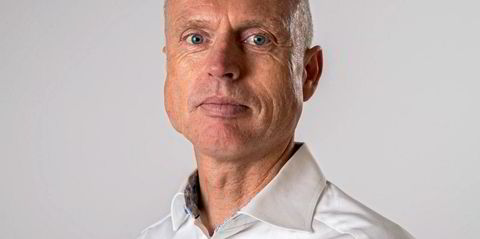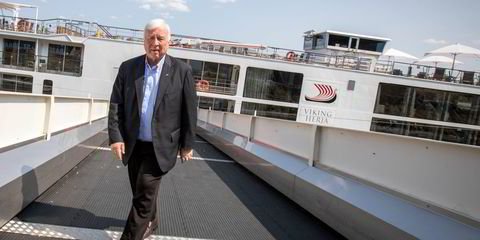Stuart Crawford hit the ground running as head of e1 Marine.
The newly-hired managing director of Ardmore Shipping's alternative fuel joint venture told TradeWinds that the company expects to have a working, class-approved methanol-to-hydrogen power unit ready by August — with an enormous market already built in.
"Everybody that we've spoken to is interested in it," Crawford said. "They want to see when the technology is marinised [adapted for marine use]."
e1 Marine was announced in March, with Ardmore, lender Maritime Partners and Oregon-based clean energy firm Element 1 each taking a one-third ownership stake.
The company's goal is to develop and market Element 1's alternative energy system for the shipping industry, which uses methanol and deionised, desalinated water pulled from the sea to produce hydrogen. That hydrogen is used to either produce electricity on board or propulsion fuel for ships.
The system, which has been used on land in trucks, both slashes carbon intensity and avoids the difficulties of carrying hydrogen, which needs to be stored at extremely low temperatures.
Crawford joins after having spent time as chief executive of Clean Ocean LNG and fleet director at Seaspan Ship Management following a career at sea.
He said e1 Marine's initial focus would be on replacing on-board generators to produce electricity for ships. Given the technology's newness, he said it was not yet ready for propulsion use outside of smaller passenger ferries.
One reason Crawford gave was the capital cost, as the e1 system competes with traditional internal combustion engines that have already achieved economies of scale.
"[As far as] deep sea, initially we'll look to displace [power] generation equipment," Crawford said. "But from tiny acorns come mighty oaks.
“This technology is very simple, very very few moving parts. You don’t have the same complexity that you’ve gotten in an internal combustion engine. Logically, as you start to increase the manufacture of these, your unit costs are going to plummet.”
Match that with the pressing need for shipowners and operators to find ways to slash emissions in order to comply with the International Maritime Organization's 2030 and 2050 goals, and Crawford described the addressable market as practically the entire industry.
Newbuildings and ships going in for scrubber or dual-fuel retrofits could be candidates for power generation system installation as the technology matures into something usable for propulsion.
A deep sea-ready e1 Marine system would allow reduction of CO2 emissions by as much as 50% with no NOx or SOx emissions.
Using renewable methanol would allow ships to meet the IMO 2050 goals and adding carbon-capture technology would help push the carbon intensity down to low levels and even possibly below zero, the company said.
“I’ve always looked at the environment, and I've been in the marine industry my whole career, as something we’ve borrowed from our children," Crawford said.
"We don’t own it. We have to return it to the same state it was when we were given it, if not better. That’s what this technology does.”







